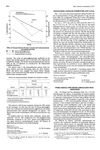
Search
for
Sort by
Research
210-240 / 1000+ results

research Molecular Mechanisms of Androgenetic Alopecia
AGA causes hair loss by shrinking hair follicles due to DHT binding, and can be treated with finasteride and minoxidil.

research The Transcriptional Co-Activator cAMP Response Element-Binding Protein-Binding Protein Is Expressed in Prostate Cancer and Enhances Androgen- and Anti-Androgen-Induced Androgen Receptor Function
A protein called CBP is found in prostate cancer and can increase the effectiveness of certain prostate cancer treatments.

research Atypical Folliculitis Caused by Malassezia spp. in Immunosuppressed Patients
Some immunosuppressed patients can get unusual skin infections from Malassezia, which can be treated with antifungal medication.

research Alopecia Areata: Comprehensive Overview and Histological Characteristics
Alopecia areata is a common autoimmune condition causing varying hair loss, diagnosed by specific patterns of inflammation around hair follicles, with several treatment options available.

research Harmless Herbs? A Review of the Recent Literature
Herbal remedies can cause adverse effects and need more safety research.

research Leucine-Rich Repeat-Containing G-Protein-Coupled Receptors as Markers of Adult Stem Cells
Certain proteins, Lgr5 and Lgr6, are important markers of adult stem cells and are involved in tissue repair and cancer development.

research Dermatoses of Pregnancy
Pregnancy can cause various skin changes and diseases, with PUPPP being the most common skin condition specific to pregnancy.

research Alopecia Areata: A Multifactorial Autoimmune Condition
Alopecia areata is an autoimmune disease causing patchy hair loss, often with other autoimmune disorders, but its exact causes are unknown.

research Physiological Functions of PP2A: Lessons from Genetically Modified Mice
Mice studies show that Protein Phosphatase 2A is crucial for cell growth, development, and disease prevention.

research Ethnic Hair Update: Past and Present
Dermatologists need to understand African American hair-care practices to better treat their hair and scalp disorders.

research The Emerging Role of Janus Kinase Inhibitors in the Treatment of Autoimmune and Inflammatory Diseases
Janus kinase inhibitors are promising drugs for treating autoimmune and inflammatory diseases.

research Topical Application of a Protein Kinase C Inhibitor Reduces Skin and Hair Pigmentation
Applying a specific inhibitor lightens skin and hair color.

research EEMCO Guidance for the Assessment of Hair Shedding and Alopecia
The document explains hair growth and shedding, factors affecting it, and methods to evaluate hair loss, emphasizing the importance of skin biopsy for diagnosis.

research Redefining Hormone Resistance in Prostate Cancer
The conclusion suggests that prostate cancer should be classified by castration status and that new therapies targeting androgen receptor signaling show promise.

research Finasteride, a Type 2 5α-Reductase Inhibitor, in the Treatment of Men with Androgenetic Alopecia
Finasteride effectively treats male hair loss, improving growth and density.

research Review Paper: The Use of Reflectance Confocal Microscopy in Selected Inflammatory Skin Diseases
Reflectance confocal microscopy is a useful, non-invasive tool for diagnosing some skin diseases, with potential for future improvements.

research Role of Bulge Epidermal Stem Cells and TSLP Signaling in Psoriasis
Blocking TSLP reduces skin inflammation and cell overgrowth in psoriasis.

research Hair Follicles and Their Role in Skin Health
Hair follicles are essential for skin health, aiding in hair growth, wound healing, and immune function.

research Association of AR rs6152G/A Gene Polymorphism With Susceptibility to Polycystic Ovary Syndrome in Chinese Women
A certain gene variant may increase the risk of polycystic ovary syndrome in Chinese women.

research Vitamin D Receptor-Mediated Control of Soggy, Wise, and Hairless Gene Expression in Keratinocytes
Vitamin D receptor helps control hair growth genes in skin cells.

research The Evolution of Primary Multimodality Treatment in Resectable Breast Cancer
Multimodal primary treatment improves survival in premenopausal breast cancer patients and is also beneficial for postmenopausal women.

research Ligand-Independent Regulation of the Hairless Promoter by Vitamin D Receptor
Vitamin D receptor can control the hairless gene linked to hair loss even without vitamin D.

research Histopathological Investigation of Clinically Non-Affected Perilesional Scalp in Alopecias Detected Unexpected Spread of Disease Activities
Scalp areas that look normal in people with hair loss may still show signs of disease under a microscope.

research Flexural Agminated Eruptive Nevi in Langerhans Cell Histiocytosis
Sunlight exposure improved a patient's skin condition, and there may be a link between a certain disease and skin growths; a leukemia treatment caused changes in hair color and growth.

research Potential Factors Contributing to Androgenetic Alopecia
Male pattern baldness may be caused by factors like poor blood circulation, scalp tension, stress, and hormonal imbalances, but the exact causes are still unclear.

research Evaluation of the 5α-Reductase Inhibitor Finasteride on Reproduction and Gonadal Development in Medaka, Oryzias Latipes
Finasteride negatively affects fish reproduction and gonadal development.

research Alopecia Areata Universalis After Phenobarbital-Induced Anticonvulsant Hypersensitivity Syndrome
A 3-year-old boy lost all his hair due to a rare reaction to phenobarbital, but it grew back after steroid treatment.

research Hyperadrenocorticism in Ferrets
Hyperadrenocorticism in ferrets is linked to neutering and indoor housing, and is best treated with surgery and a deslorelin implant.

research Is Low-Level Laser Therapy Useful as an Adjunctive Treatment for Canine Acral Lick Dermatitis? A Randomized, Double-Blinded, Sham-Controlled Study
Low-level laser therapy did not reduce licking or improve lesions in dogs with ALD but did increase hair growth.